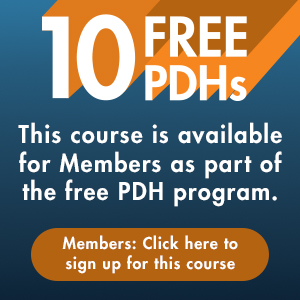

This product is available for group registration. Learn More
View Important Policies and System Requirements for this course.
This webinar was co-sponsored by ASCE's Environmental & Water Resources Institute(EWRI) and ASCE Continuing Education
Instructor: Rollin Hotchkiss, Ph.D., P.E., BC.WRE
This webinar was co-sponsored by ASCE's and ASCE Continuing Education.
Course Length: 1 Hour
Purpose and Background
State Departments of Transportation are in the midst of rehabilitating or replacing a majority of their culverts. Engineers now have available tools that will allow them to design culverts that will meet traditional requirements while also providing for upstream fish passage. Providing for fish passage will help restore ecosystem connectivity in the watershed, reduce downstream scour and maintenance needs, and improve overall hydraulic conditions in our nation's smaller streams and rivers.
Learning Outcomes and Seminar Benefits
Participant will gain an understanding of the procedures available for prioritizing and assessing culverts for rehabilitation and/or replacement considering fish passage, know how to decide which alternative is most appropriate, and be able to access current design manuals for both cases.
Upon completion of this course, you will be able to:
- Determine the need and current objectives for providing fish passage through culverts
- Recognize the terminology and design approaches currently in use to better communicate with Federal and State agencies
- Identify how culverts are prioritized and assessed for rehabilitation or replacement when considering fish passage
Assessment of Learning Outcomes
Students' achievement of the learning outcomes will be assessed via a short post-assessment (true-false, multiple choice and fill in the blank questions).
Intended Audience
Civil and environmental engineers and engineering managers tasked with evaluating, designing, and installing culverts, and those involved in identifying and implementing stream mitigation projects to address construction impacts will benefit from this webinar.
Both state Departments of Transportation (DOTs) and consulting firms that support DOT design activities for fish passage and stream restoration will find this webinar beneficial.
Seminar Outline
- The fish passage picture - needs and requirements
- Prioritizing and assessing culverts for rehabilitation or replacement considering fish passage needs
- Current design procedures for providing fish passage
How to Earn your CEUs/PDHs and Receive Your Certificate of Completion
To receive your certificate of completion, you will need to complete a short on-line post-test and receive a passing score of 70% or higher within 1 year of purchasing the course.
How do I convert CEUs to PDHs?
1.0 CEU = 10 PDHs [Example: 0.1 CEU = 1 PDH]
